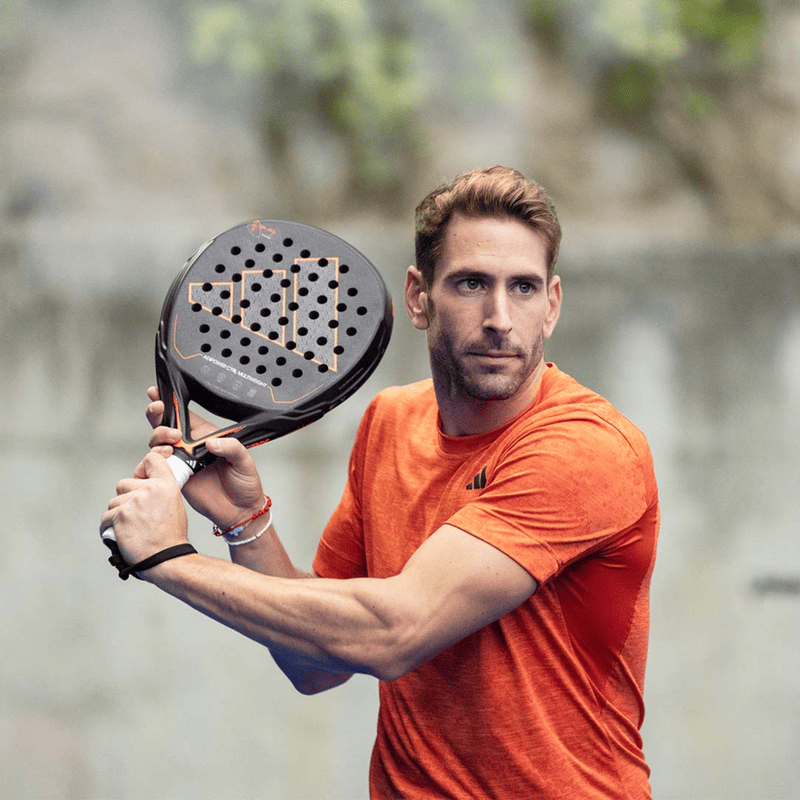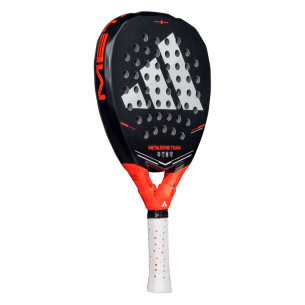
How to play at the net, with adidas Alfonso García Gamo monitor
Playing at the net is one of the most important aspects of padel because it allows you to take the initiative on the point. If we control the situation, that position on the court gives us a multitude of options to play and, above all, to finish the point. But, in turn, we run the risk of being exposed as a pair if we don't know how to position ourselves and move properly.
To assess that moment of the game in more detail, we speak to adidas coach, Alfonso García Gamo. He tells us all the key aspects to consider for how to master the points when we make the decision to advance up the court.
When should we go to the net?
.jpg)
The first thing we must do to play on the net is decide on the moment in which to approach it. You have to "be patient from the back of the court and play a good enough shot that provides enough time to move forward", explains García Gamo. Therefore, reading the game is key to choosing the right situation.
In case the other couple finds themselves dominating the net, the option of making it ours is even more complex. "When defending from the back of the court, to take the net, you need a shot that forces the opponents back," says our coach. A lob, a passing shot, or even a bad shot from the rivals may be the options to take advantage of.
Once we take the step forward, it is important to coordinate. "When a player goes up to the net, their teammate must accompany them," says García Gamo. He adds that if not "a space is created through which the opponents can play. The pair needs to know each other’s game and get along." Having an understanding as a team is essential to playing a successful game at the net.
What should we take into account when at the net?

To begin with, we must be clear that we have a multitude of options at the net. Taking control of the net will give you the advantage, so should be a priority. What is clear is that reading your rivals' situation correctly will allow you to make better decisions. From the outset, when you go up, you can "choose between being more offensive and trying to win the point by attacking, or looking to play into the rivals' spaces, and trying to force the mistake," says Alfonso García Gamo.
Making that decision, between taking control of the point or being slightly more patient is conditioned by three factors, according to our coach. First of all, “the conditions of the court”. If the court is fast, it will favour us to play offensively. If it is slower and the ball moves less, being patient and moving the opponent is the best option. Linked to this first point, we have the second: “temperature”. The cold makes the court slower, while the heat favours a faster game.
The third determining aspect is the who. The player's profile and their preferred style are decisive in how to play at the net. "When an offensive player is at the net, they tend to try to win the point quickly," says García Gamo. “Whereas defensive players, when they are at the net, they tend to play more patiently so that somehow their partner can finish the point sooner or later,” he adds. Knowing what each one is good at minimises mistakes.
There is a certainty in taking control at the net but it is important to remain patient and look for the opportunity to move forward. "The shot that allows the couple to take the net, to continue playing there and not lose the momentum, needs to be really good," says the monitor. For this also what is non-negotiable is "to be very active, with intensity in the movement of feet, fast, to anticipate the movements of the rivals". A bad position at the net will lead the opponent to comfortably outplay us and we will probably lose the point.
When is it necessary to go back?

Plan A at the net is to finish the point. But it may happen that you have to resort to a plan B, to return to the back of the court. And when is that decision made? Alfonso García Gamo says: "when the opponents have managed to get out of the defence with a good shot, either with a passing shot or a lob, we cannot respond at the net".
“It is a difficult decision to make, since going back to the back of the court implies losing the initiative of the point”, acknowledges our coach. But he adds that "it must also be clear that in the face of certain shots from the opponent, it is better to return to the back and start playing calmly with patience again." And it is that staying in the net at all costs can mean giving the rival the point on a silver platter.
In general, the key to playing at the net is having a mutual understanding, knowing how to make all these decisions as a pair and at the same time. "Anticipating what comes next," says García Gamo, who usually provides the differential factor. The more you know your partner, the easier it will be for you. So from here we encourage you to train and put into practice what has been explained to improve in this facet of the game.















